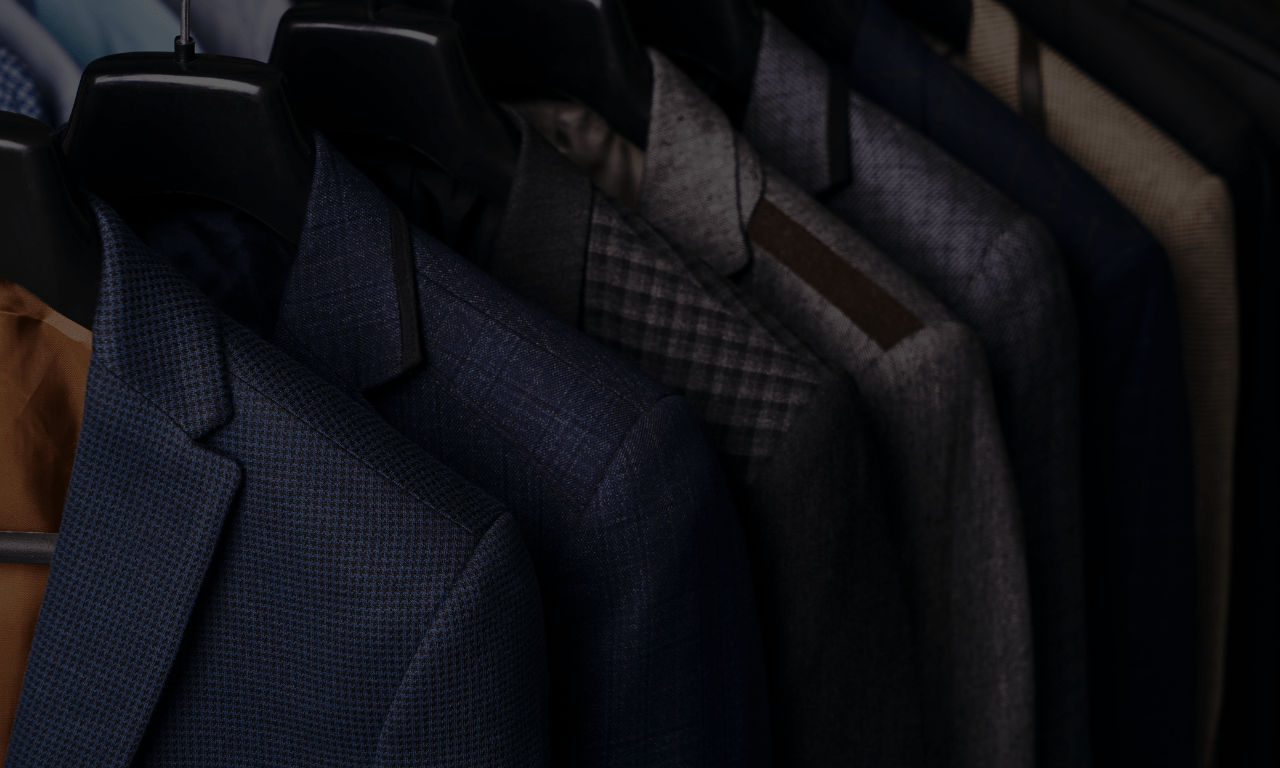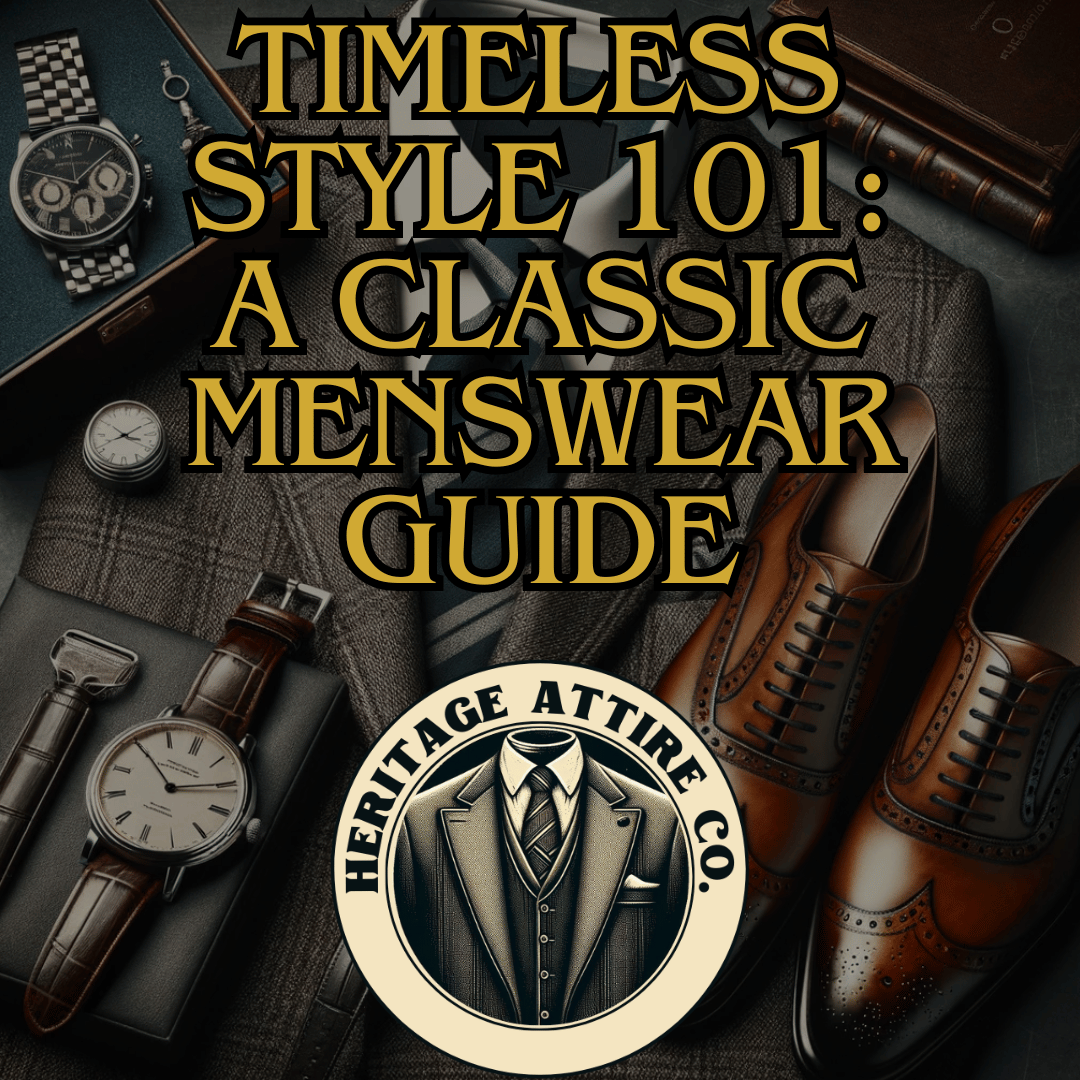This guide is crafted for the modern gentleman who appreciates the finesse of traditional style while navigating the contemporary fashion landscape.
Menswear is not just about clothing; it’s an art form, a means of self-expression, and a nod to a rich sartorial heritage that has evolved over centuries. In these pages, you will embark on a journey through the essential aspects of classic menswear, from the foundations of building a timeless wardrobe to the intricate details of accessorizing and grooming.
Whether you are a seasoned style aficionado or a novice eager to learn the ropes of dressing well, this guide offers invaluable insights into creating a wardrobe that exudes elegance, quality, and timelessness. We delve deep into the craftsmanship behind classic garments, unravel the significance of each piece in a gentleman’s wardrobe, and provide practical advice for everyday styling.
In an era where trends come and go, classic menswear stands steadfast, distinguished by its enduring appeal and understated sophistication. This guide is not merely about following rules; it’s about understanding the principles that underpin men’s fashion to curate a style that is uniquely and authentically yours.
Table of Contents
1. The Basics of Classic Menswear

Classic menswear represents a blend of timeless elegance, tradition, and understated style. Rooted in a rich history that dates back several centuries, classic menswear is not just about clothes; it’s an embodiment of a lifestyle, an expression of personal dignity, and a testament to the art of subtlety. This guide delves into the foundational elements of classic menswear, offering insights into creating a versatile, sophisticated, and timeless wardrobe. From the essential pieces to the importance of fit and fabric, we explore the principles that have stood the test of time in men’s fashion.
Essential Wardrobe Pieces
The foundation of classic menswear lies in a few key pieces that every man should have in his wardrobe. These include:
- The Suit: A well-fitted suit is the cornerstone of a gentleman’s wardrobe. Whether it’s a single-breasted or double-breasted design, the suit should be tailored to fit perfectly. The fabric plays a crucial role, with wool being a classic choice for its durability and elegance. A navy or charcoal grey suit is versatile and appropriate for most occasions.
- Dress Shirts: A crisp white dress shirt is non-negotiable. It’s the backbone of formal attire and pairs well with almost everything. Broadening the selection to include light blue, subtle stripes, or a light pink can add variety while maintaining a classic look.
- Trousers: Beyond suit pants, having a variety of trousers such as chinos or wool trousers can diversify your wardrobe. They offer flexibility to dress down an outfit while maintaining a polished look.
- Shoes: The importance of high-quality leather shoes cannot be overstated. Classic styles such as Oxfords, brogues, and loafers in black or brown are essential. They should be well-maintained, regularly polished, and stored properly to prolong their life.
Understanding Fabrics and Materials:
Fabric selection is pivotal in classic menswear. It dictates not just the look but also the comfort and longevity of the garment. Wool suits are a staple due to their durability, breathability, and elegance. For shirts, cotton reigns supreme, offering comfort, ease of care, and a crisp appearance. Summer calls for lighter fabrics like linen, which provide breathability in warm weather. Understanding the properties of different fabrics and choosing them according to the season and occasion is key to building a functional wardrobe.
Read more: The Right Fabrics 101: Natural Fabrics & Weaves
The Art of Tailoring and Fit
A well-tailored outfit can elevate a man’s presence significantly. The fit is perhaps the most critical aspect of classic menswear. A suit should hug the shoulders perfectly, with trousers falling cleanly and a jacket that cinches slightly at the waist. The length of the sleeves and pants must be adjusted to the individual’s proportions. Tailoring isn’t just about measurements; it’s about understanding body shape and how clothes can enhance it. Even off-the-rack items should be brought to a tailor for those personal adjustments that make a significant difference.
Read more: Mastering Tailoring: Pre and Post-Purchase Considerations for Suits and Jackets
Read more: Tips to Save on Tailoring
Read more: Mastering the Fit: A 101 Guide to Sizing and Tailoring
Building a Color Palette
The classic menswear palette is rooted in neutrality. Navy, gray, and black form the backbone, offering versatility and elegance. These colors are easy to mix and match, and they provide a canvas for personal expression through accessories. Understanding color theory and how different colors complement each other can add depth to your wardrobe. Introducing muted tones like olive, burgundy, or beige can add variety while keeping in line with the classic aesthetic.
Essential Accessories
Accessories are the final touch in classic menswear, providing an opportunity to express individuality. Ties, pocket squares, belts, and watches should complement the outfit without overwhelming it. The rule of thumb is coordination, not exact matching. A well-chosen accessory can become a focal point of an ensemble, so select them thoughtfully.
2. Dressing for the Occasion
Understanding and adhering to dress codes is crucial in the world of classic menswear. Dress codes are more than just a set of clothing guidelines; they are a reflection of respect for the occasion and setting. From the boardroom to a casual weekend outing, each setting requires a different approach to dressing. This section will decode various dress codes, providing clarity and confidence in choosing the appropriate attire. We’ll explore how these codes have evolved and how to navigate them today, ensuring that you’re never underdressed or overdressed.
Business and Professional Attire
In the professional world, making a good impression is often linked to how one dresses. Business attire should convey professionalism, competence, and respect. A well-fitted suit in navy or gray is the hallmark of business wear. The shirt should be crisp, preferably in a light color like white or pale blue. Ties should be conservative in pattern and color, complementing the suit and shirt.
Shoes should be polished, with classic styles such as Oxfords or derbies being ideal choices. Accessories like a leather briefcase or a subtle watch can enhance the professional look.
In some industries, business casual is acceptable, which allows for more flexibility. This may include blazers with chinos or dark denim, and dress shirts without a tie. Understanding the nuances of your industry’s dress code is key.
Casual and Smart Casual
Casual attire should be comfortable yet put together, reflecting a relaxed sense of style. Classic menswear pieces for casual wear include polo shirts, well-fitted jeans or chinos, and casual jackets like a Harrington or a bomber. Footwear can include loafers, boat shoes, or clean sneakers.
Smart casual is a step up from casual and is often required for events like dinner parties or evening socials. It strikes a balance between being relaxed and polished. A typical smart casual outfit might include a blazer paired with chinos or dark jeans, a collared shirt, and loafers or brogues. The key is to mix elements of formal and casual wear to achieve a refined yet approachable look.
Read more: What is Smart Casual? 6 Quick Tips to Look Dapper in a Casual Workplace
Read more: Unleash Your Smart Casual Outfits with these Powerful Style Ideas for 2024
Formal and Black-Tie Events

Formal events such as galas, weddings, and certain evening functions call for a more sophisticated dress code. Black-tie events require a tuxedo, with a black bow tie, a white dress shirt, and patent leather shoes. The tuxedo should be well-tailored, with a silk lapel for added elegance. There are some who argue that a black-tie event is not formal, and that a white-tie is the only formal occasion.
For formal events that are not black-tie, a dark suit, a conservative tie, and dress shoes are appropriate. It’s essential to pay attention to the details: the tie should be silk, the shirt crisp and clean, and accessories like cufflinks or a pocket square can be used to add a touch of personal style.
Some notes because I know there are some out there who are going to pick apart at the technicalities of archaic high-society norms of a century or so ago that are not reflective of what this means in this century. There are some from the dark corners of the internet that may argue that only a white-tie event is a formal event.
This may have been true among extremely privileged elites in some segments of the globe a long time ago, but language, culture, and yes, even formality, evolved. Black-tie events, are extremely rare events, the vast majority of people will not find themselves in these types of events. This event by all accounts is a formal event and I would further to say that what we deem to be formal extends far beyond this.
Dressing for Special Occasions
Special occasions like weddings, anniversaries, or cultural events often have specific dress requirements. For weddings, the time of day and the venue can dictate the appropriate attire. Daytime weddings may call for lighter suits, while evening events typically require darker, more formal attire.
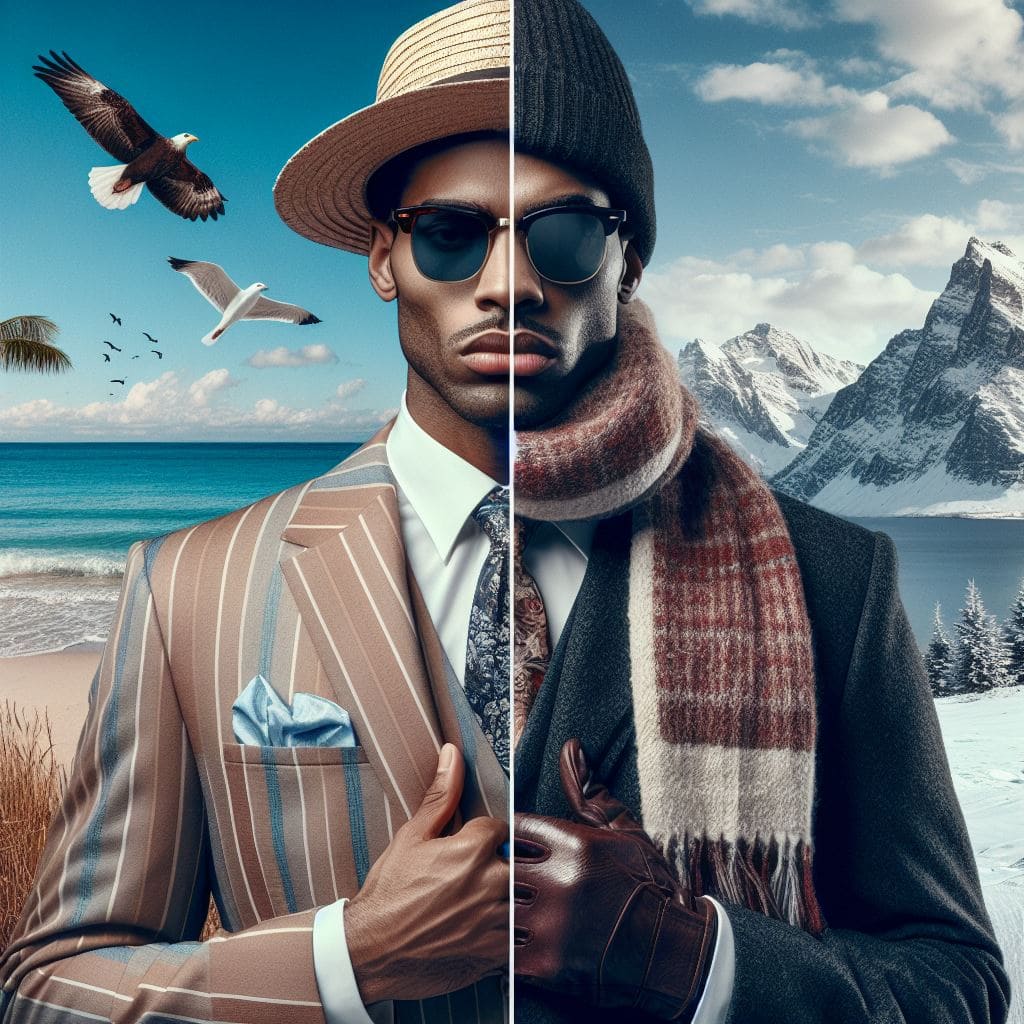
Cultural events may have unique dress codes, and it’s important to research and respect these traditions. For example, a traditional Indian wedding may call for a sherwani or a kurta for men.
Seasonal Dressing Tips
Adapting your style for different seasons is also crucial. Lighter fabrics and colors are suitable for summer events, while heavier fabrics like wool are better for winter. Layering is key for transitional seasons, allowing for adjustments based on the weather.
Mastering the art of dressing for various occasions is a skill that elevates a gentleman’s presence. By understanding and respecting dress codes, you ensure that your attire is always appropriate, stylish, and a reflection of your respect for the event and its participants.
3. Seasonal Style Guides

Dressing well means adapting your style to the changing seasons. Each season brings its unique challenges and opportunities in terms of fashion. The key is to balance comfort, functionality, and style. This comprehensive guide will walk you through the essentials of classic menswear for each season, ensuring you’re well-prepared for the varying climatic conditions while maintaining a sharp and stylish appearance. We’ll cover the best fabrics, colors, and layering techniques for spring, summer, autumn, and winter, helping you to build a versatile and seasonally appropriate wardrobe.
Spring
Spring is a time of transition and calls for adaptable clothing options. It’s about striking a balance between shedding the heavy layers of winter and preparing for occasional chills. Key pieces include lightweight blazers, cotton or light wool trousers, and long-sleeve shirts that can be layered under sweaters or jackets.
In terms of color, spring is an opportunity to introduce lighter shades into your wardrobe. Pastel colors, light blues, greens, and even subtle pinks can add a fresh touch to your outfits.
Footwear should also transition in spring; loafers and brogues in lighter colors are appropriate. Additionally, a lightweight trench coat or a raincoat becomes essential for unpredictable spring showers.

Summer
Summer fashion is all about staying cool while looking sharp. Breathable fabrics like linen and lightweight cotton are ideal. Suits and blazers in these materials keep you comfortable and stylish in the heat.
Color-wise, summer is perfect for experimenting with brighter and lighter shades. Whites, creams, light blues, and even bolder colors can be incorporated into your summer wardrobe.
For formal occasions, opt for light-colored suits, and for casual settings, polo shirts, short-sleeved button-downs, and chino shorts are appropriate. Footwear like loafers, boat shoes, and clean sneakers work well for summer.
Don’t forget accessories; sunglasses and Panama hats can be both stylish and functional in protecting you from the sun.
Autumn

Autumn is the season of layering. As the temperature starts to drop, it’s time to bring out the heavier fabrics like wool and tweed. Key pieces include woolen blazers, cardigans, and thicker trousers.
Autumn’s color palette typically involves richer, deeper shades. Think burgundies, deep greens, and browns. These colors reflect the changing leaves and add a warm tone to your outfits.
Layering is essential; a well-coordinated combination of shirts, vests, and jackets can create a sophisticated and functional look. Footwear like leather boots and brogues complement the autumn attire.
Winter
Winter calls for clothing that provides warmth without compromising on style. Key pieces include heavy wool suits, overcoats, turtlenecks, and thick sweaters. Fabrics like flannel, cashmere, and heavy wool are ideal for keeping warm.
Color-wise, winter is a time for darker shades – navy, gray, black, and deep reds are all suitable choices. These colors not only resonate with the season but also pair well with the heavier fabrics typically worn.

An overcoat is a winter essential. A well-fitted overcoat in a classic color like camel or charcoal can be layered over suits or casual attire for added warmth and style.
Winter accessories are vital – gloves, scarves, and hats in coordinating colors not only keep you warm but also add to the overall aesthetic of your outfit.
Navigating the sartorial challenges of each season can be a delightful experience. By understanding the key pieces, fabrics, and colors suitable for each season, you can ensure that your style remains impeccable and appropriate throughout the year.
4. Fashion History Lessons
The Evolution of Menswear

Understanding the history of menswear is essential to appreciate the timeless elegance of classic style. Men’s fashion has evolved significantly over the centuries, with each era contributing its unique elements. The journey of menswear begins in the 18th century, where extravagance and opulence defined men’s clothing. The 19th century saw a shift towards more practical and subdued attire, with the introduction of the modern suit.
Key milestones in menswear include the Beau Brummell era in the early 19th century, who revolutionized men’s fashion with his advocacy for understated elegance and perfectly tailored garments. The Industrial Revolution brought about mass production of men’s clothing, making fashion more accessible. The 20th century introduced significant stylistic changes, from the Roaring Twenties’ flair to the minimalist approach of the 1950s.
Influential Fashion Icons and Their Impact
Throughout history, certain individuals have significantly impacted men’s fashion. Icons like the Duke of Windsor, known for his penchant for pattern mixing and casual formality, greatly influenced men’s style. Cary Grant and Fred Astaire brought Hollywood glamour to menswear, while designers like Giorgio Armani and Ralph Lauren redefined modern menswear.
The impact of these icons is evident in various elements of today’s fashion – from the Duke of Windsor’s popularization of the Windsor knot in ties to Cary Grant’s impeccable tailoring and understated sophistication. These figures not only defined the fashion of their times but also laid the groundwork for contemporary classic menswear.
Historical Fashion Movements
Men’s fashion has been shaped by various historical movements and events. For example, the dandyism movement emphasized the importance of physical appearance and refined language, which is reflected in today’s emphasis on personal grooming and tailored clothing.
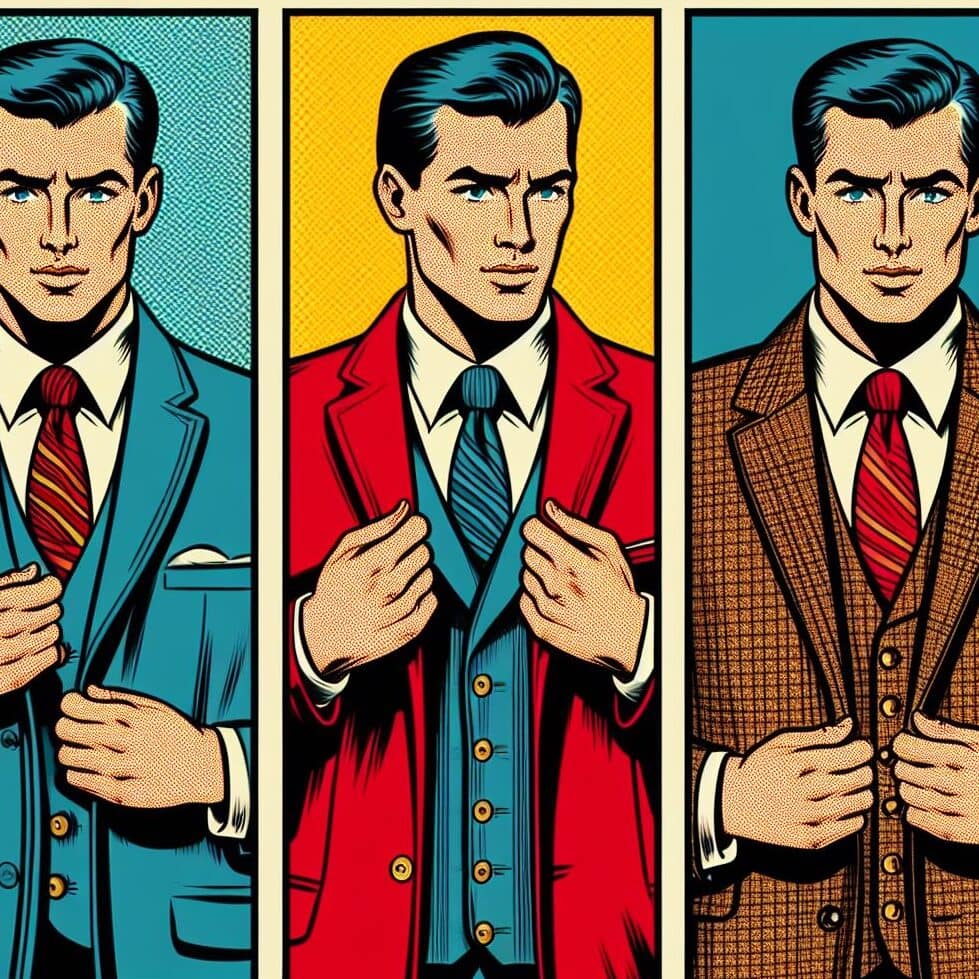
World Wars also played a pivotal role in shaping menswear. The need for practical and durable clothing during these times led to the popularization of garments like trench coats and bomber jackets, which are staples in modern wardrobes.
The post-war era saw a shift towards more casual and relaxed styles. The 1960s introduced a more youthful and rebellious look, while the 1980s saw the rise of power dressing.
The Suit’s Journey Through Time
The suit, a quintessential element of men’s fashion, has a rich history. Initially, suits were highly ornamental, with intricate embroidery and luxurious fabrics. However, the Victorian era brought about a more somber and restrained style. The 20th century continued to refine the suit, with a focus on fit and simplicity.
The evolution of the suit is a testament to changing societal norms and attitudes. The 1920s saw looser fits and brighter colors, reflecting the era’s optimism. The post-war years introduced slimmer silhouettes, as seen in the iconic styles of the 1960s. Today, the suit continues to evolve, balancing modern trends with traditional craftsmanship.
Understanding the history of menswear enriches one’s perspective on fashion. It’s a fascinating journey through time, reflecting societal changes, cultural shifts, and the evolution of aesthetics. This historical context adds depth to the appreciation of classic menswear, highlighting its timelessness and continual adaptation. As we dress today, we carry forward a legacy of elegance, craftsmanship, and style that has been shaped by centuries of history.
Read more: Fashion & Menswear: Unraveling the Exciting History thread by thread
Read more: The Sport Coat : The 170 year old history of the Best & Most Versatile Men’s Attire.
5. Accessorizing Right
Accessories in classic menswear are more than just decorative items; they are essential components that complete and enhance an outfit. The right accessories can elevate a look, add a personal touch, and showcase attention to detail. This section explores the key accessories in a gentleman’s wardrobe, including watches, ties, pocket squares, shoes, belts, bags, and jewelry, and provides advice on selecting and styling them to complement various outfits.
Watches: Timeless Elegance on Your Wrist
The watch is a quintessential accessory for the modern gentleman. It’s a symbol of personal style and often, a reflection of one’s status. When choosing a watch, consider the occasion, the wardrobe, and personal style. Dress watches should be sleek and understated, suitable for formal occasions. For a more casual look, sports watches or chronographs can add a touch of rugged sophistication.
When pairing a watch with an outfit, ensure that it complements the overall tone. A leather strap is more formal and can match the color of your shoes and belt, while metal bracelets offer versatility and durability.
Ties and Pocket Squares: The Art of Coordination
Ties and pocket squares are vital in adding color and personality to an outfit. When selecting a tie, consider the color, pattern, and fabric. Silk ties are ideal for a polished look, while wool or knit ties can add texture for a more casual appearance.
The rule of thumb with pocket squares is that they should complement, not match, your tie. They offer an opportunity to experiment with colors and patterns. The way a pocket square is folded also plays a role – from the classic straight fold to a more flamboyant puff fold.
Shoes and Belts: Foundation of Every Outfit
Shoes and belts form the foundation of a man’s outfit. The quality of shoes can speak volumes about a person’s attention to detail. Classic styles like Oxfords, Derbies, and loafers are essential in a gentleman’s wardrobe. The color should generally match the belt for a coordinated look.
Belts should be chosen with care – a slim, leather belt for formal occasions, and a thicker one for casual wear. The finish and color of the belt should harmonize with the shoes and the overall outfit.
Bags and Briefcases: Functional Style
A well-chosen bag or briefcase can be both stylish and functional. For professional settings, a leather briefcase adds an element of sophistication. Casual bags, like messenger bags or backpacks, should be chosen for practicality and ease of use, without compromising on style.
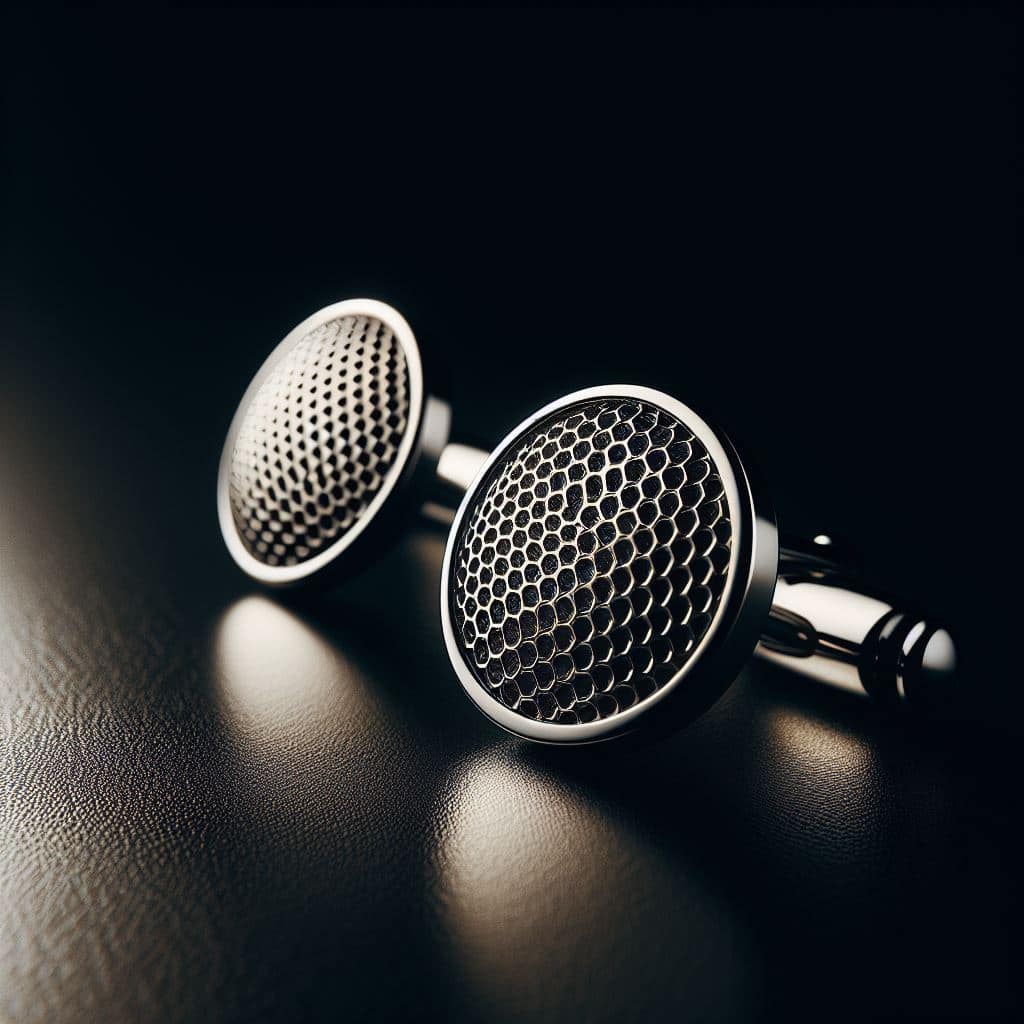
Jewelry and Cufflinks: Subtle Detailing
Men’s jewelry should be understated and elegant. Cufflinks, tie bars, and rings can add a personal touch to an outfit. They should be chosen to complement the other elements of the outfit and reflect the wearer’s personality.
Accessorizing in menswear is an art that balances functionality, style, and personal expression. By understanding the importance of each accessory and mastering the art of coordination, one can add a distinct touch to their attire, making every outfit not just a display of fashion, but a reflection of individuality.
6. The Essentials in Classic Footwear
Shoes are a pivotal aspect of menswear, often making a definitive statement in a gentleman’s attire. The right pair can elevate an outfit from ordinary to outstanding. This section is a comprehensive guide to classic men’s footwear, covering the different types and styles, their historical significance, and how they fit into the modern wardrobe. From the formal elegance of Oxfords to the casual charm of loafers, understanding the nuances of each style is key to mastering men’s footwear.
Read more: Shoes and Boots for Classic Menswear: A Comprehensive Guide
Types of Classic Men’s Shoes and Their Occasions
- Oxfords: Known for their sleek design and closed lacing system, Oxfords are the epitome of formal footwear. Ideal for business attire and formal events.
- Derbies: Similar to Oxfords but with an open lacing system, making them slightly less formal. Versatile for business casual and semi-formal occasions.
- Brogues: Distinguished by their decorative perforations and stitching, brogues add a touch of personality to both casual and formal wear.
- Loafers: Slip-on style that ranges from casual (like penny loafers) to more formal (like tassel loafers). Perfect for smart casual and business casual settings.
- Monk Straps: Featuring a buckle and strap instead of laces, monk strap shoes are a stylish alternative for formal and semi-formal attire.
- Boots: Including styles like Chelsea boots and Chukka boots, they are suitable for casual to smart casual occasions, offering both style and practicality.
Choosing the Right Shoes for Your Style
Selecting the right pair of shoes involves considering the occasion, outfit, and personal style. For formal events, stick to classic styles like Oxfords or patent leather shoes. For everyday wear, versatility is key – shoes like Derbies, loafers, and brogues can complement a variety of outfits.
The color of the shoes is also important. Black is formal and versatile, while browns and tans offer more casual appeal and can add warmth to your outfit. The material of the shoe, from classic leather to suede, also plays a role in the overall look.
Care and Maintenance of Classic Shoes
Proper care can significantly extend the life of your shoes. Key tips include:
- Regular Cleaning: Remove dirt and dust with a soft brush. For leather shoes, use a cleaner and conditioner to keep the leather supple.
- Polishing: Regular polishing maintains the appearance and conditions the leather. Match the polish to the color of your shoes.
- Shoe Trees: Use cedar shoe trees to maintain the shape of the shoes and absorb moisture.
- Storage: Store shoes in a dry, cool place. Avoid direct sunlight which can fade and damage the material.
- Repair and Maintenance: Regularly check for wear and tear. Professional repairs, like resoling or reheeling, can dramatically extend the life of a pair of good shoes.
Understanding and investing in classic footwear is a testament to a man’s appreciation for quality and style. The right shoes not only complete an outfit but also speak volumes about the wearer’s attention to detail and fashion sense. By choosing wisely and caring for them properly, your shoes can be both a style statement and a long-lasting element of your wardrobe.
Read more: The Essentials: Top 5 Shoes Every Canadian Man Needs for Cool Classic Style
7. Grooming and Maintenance
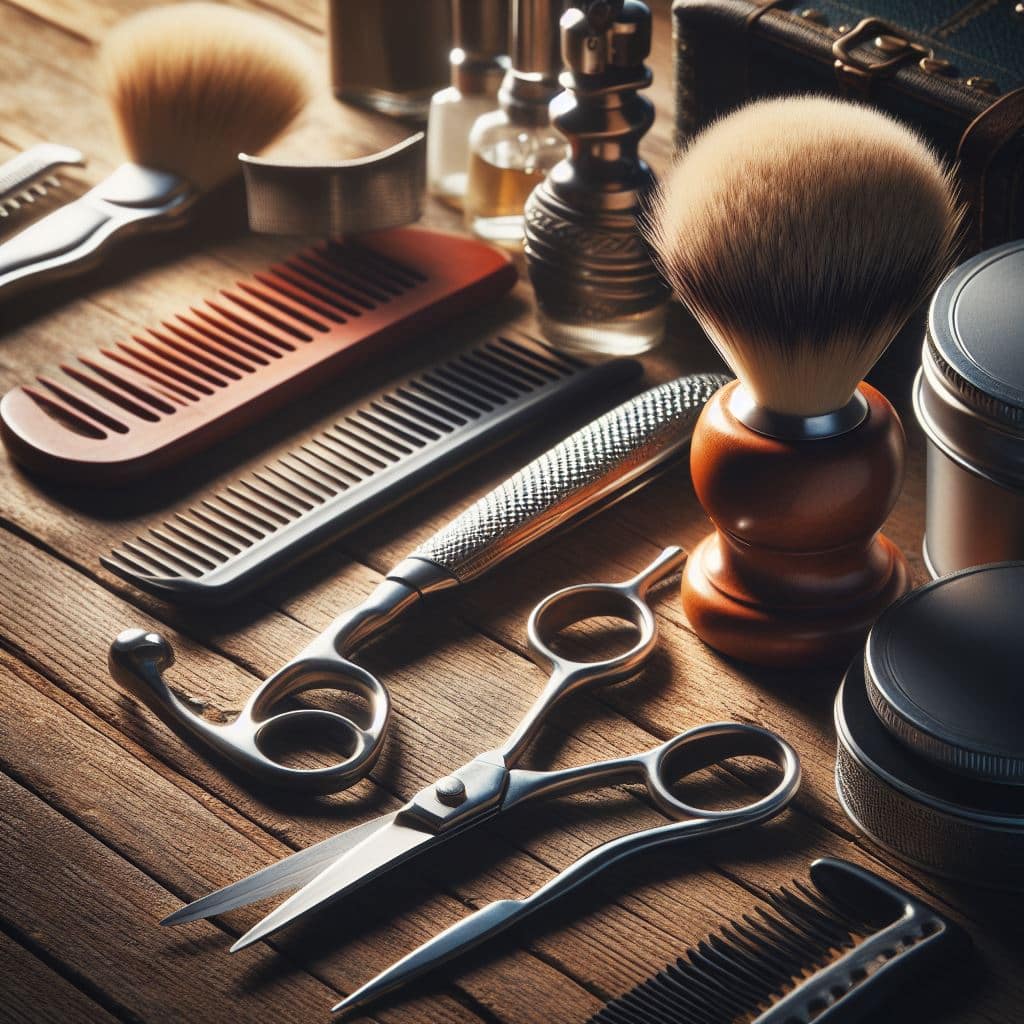
In the realm of classic menswear, grooming and wardrobe maintenance are as crucial as the clothing itself. Proper grooming enhances one’s overall appearance and complements the sophistication that classic attire brings. Meanwhile, taking care of your wardrobe ensures longevity and continual elegance of your garments. This section offers insights into the best practices for personal grooming and garment care, ensuring that every aspect of your appearance is polished and refined.
Personal Grooming Essentials
A well-groomed appearance is a fundamental aspect of classic menswear. This includes regular haircuts, neat facial hair, and skincare. Hair should be styled in a clean, classic cut that suits your face shape and hair type. For those with facial hair, regular trimming and shaping are essential to maintain a tidy look.
Skincare is often overlooked in men’s grooming routines but is vital for a healthy, refreshed appearance. A basic skincare routine, including cleansing, moisturizing, and sun protection, can make a significant difference. Additionally, attention to details like manicured nails and minimal, subtle colognes or aftershaves enhances the overall impression.
Wardrobe Care and Maintenance
Taking care of your wardrobe is essential to ensure that each piece remains in excellent condition, retaining its shape, color, and texture over time.
- Suit Care: Suits should be hung on proper suit hangers to maintain their shape. Use a garment brush to remove dust and lint. It’s advisable to air suits after wearing and limit dry cleaning to a few times a year to avoid fabric damage.
- Shirt Care: Cotton shirts should be laundered regularly. They can be machine washed on a gentle cycle or hand-washed. Pay attention to the collar and cuffs, which are prone to stains. Ironing shirts while they are slightly damp eases the process and helps achieve a crisp finish.
- Shoe Care: Leather shoes require regular polishing and conditioning to maintain their look and longevity. Use shoe trees to keep the shape of the shoes and absorb moisture. Suede shoes need a special brush and should be protected with a suitable suede protector.
- Storage: Seasonal garments should be stored properly. Woolen items must be cleaned before storage to avoid moth damage. Use breathable garment bags for storage and cedar blocks to repel moths.
- Repairs and Alterations: Regularly inspect your garments for any required repairs or alterations. Promptly addressing issues like loose buttons or hem repairs can extend the life of your clothing.
Proper grooming and meticulous care of your wardrobe are integral to the classic menswear ethos. By investing time in personal grooming and garment maintenance, you ensure that your appearance consistently reflects the elegance and attention to detail that classic style embodies.
8. Sustainable and Ethical Fashion
In today’s world, fashion is not just about style and trends; it’s increasingly about making responsible choices. Sustainable and ethical fashion addresses the environmental and social impact of the clothing industry. For the classic menswear enthusiast, this means choosing garments that are not only timeless in style but also responsibly made. This section explores how to incorporate sustainability into your wardrobe, highlighting the importance of quality over quantity, the benefits of supporting ethical brands, and how to make more environmentally friendly fashion choices.
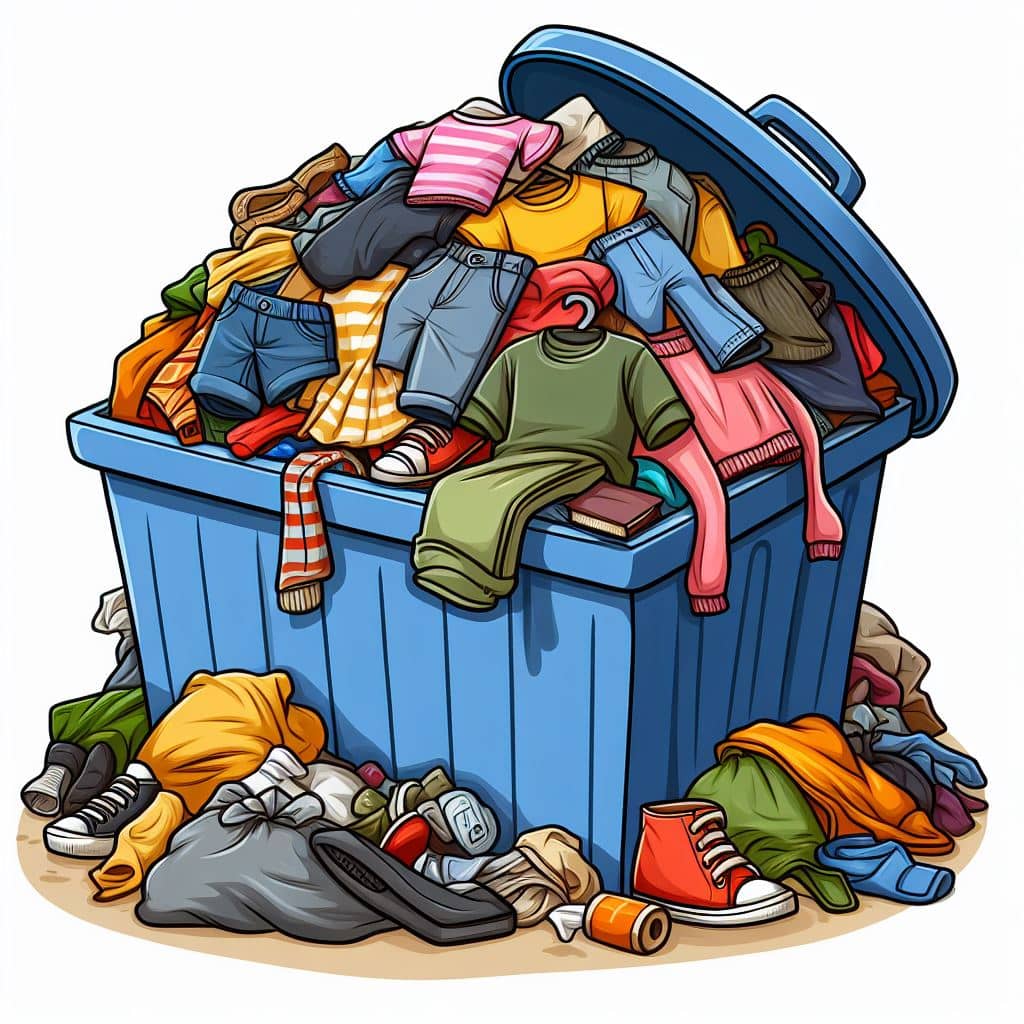
Quality Over Quantity: The Cornerstone of Sustainable Fashion
One of the key principles of sustainable fashion is investing in high-quality pieces that last longer, reducing the need for frequent replacements. This approach aligns perfectly with the ethos of classic menswear, which prioritizes timeless quality. By choosing well-crafted garments made from durable materials, you not only ensure a lasting wardrobe but also minimize your environmental footprint.
Look for classic pieces that are versatile and can be styled in multiple ways. This reduces the overall number of items needed in your wardrobe, simplifying your choices while maintaining a sophisticated style.
Choosing Sustainable Fabrics and Materials
Sustainable fabrics are crucial in reducing the environmental impact of your wardrobe. Natural fibers like organic cotton, linen, wool, and silk are more environmentally friendly choices. These materials are biodegradable and often have a lower ecological footprint compared to synthetic fabrics.
In addition to fabrics, consider the dyes and treatments used in clothing. Eco-friendly dyes and minimal chemical treatments are better for the environment and often result in a product that is gentler on the skin.
Supporting Ethical Brands and Practices
Ethical fashion concerns the human aspect of garment production. It’s about ensuring fair labor practices, safe working conditions, and fair wages for workers. When purchasing new items, research brands that are transparent about their manufacturing processes and committed to ethical practices.
Supporting smaller local businesses can also contribute to a more sustainable and ethical fashion industry. These businesses often have a smaller carbon footprint and are more likely to use ethical manufacturing practices.
Caring for Garments in an Eco-Friendly Way
The way you care for your clothing can also impact sustainability. Washing clothes less frequently and at lower temperatures can conserve energy and reduce wear and tear on garments. Using eco-friendly laundry detergents and avoiding dry cleaning chemicals are other ways to make your wardrobe care more sustainable.
Air-drying clothes instead of using a dryer not only saves energy but can also preserve the quality of the clothes.
Embracing sustainable and ethical fashion in the world of classic menswear is not only a style choice but a commitment to responsible living. By focusing on quality, sustainability, and ethical practices, you can build a wardrobe that not only looks good but also aligns with the values of environmental consciousness and social responsibility. This approach to fashion is not just a trend; it’s a timeless philosophy that enhances the value and meaning of the clothes we wear.
Read more: The Perils of Fast Fashion: Embracing Timeless Classic Menswear
9. Classic Menswear Experts
In the ever-evolving landscape of classic menswear, staying informed and inspired is key. Expert interviews and insights offer a unique opportunity to tap into the minds of those who shape fashion trends and standards. This section brings explains the various types of experts that exist within the realm of Classic Menswear. Each type of expert offers something unique to the field to really understand the topic in depth. Its important to consider and learn from tailors, designers, stylists, and fashion historians.
All provide a providing a well-rounded understanding of current trends, timeless style advice, and a sneak peek into the future of menswear. It is the combination of all these different types of experts that offers you insights into what is truly timeless and what is perhaps, a passing fad. This section will go over in general, what types of knowledge you may be able to gain from each type of expert.
Learning from Tailors and Designers
Why listen to them? Well, Tailors and designers are the architects of fashion. They blend artistry with functionality to create garments that speak volumes about style and quality. Interviews with these professionals can reveal the intricacies of garment construction, the importance of material selection, and the secrets behind perfect tailoring.
Designers can provide insights into emerging trends, how classic elements are being reinterpreted in modern fashion, and tips on incorporating these trends into a classic wardrobe without losing the timeless appeal.
Here are some examples to check out:
Stylists’ Perspectives on Personal Style
What do they offer? Well, unlikely tailors and designers, they don’t really make the garments. What they offer you is insights into how things put together make you dapper. Fashion stylists play a crucial role in shaping how apparel is perceived and worn. Their insights are invaluable for understanding how to put together outfits, balance proportions, and select colors and patterns that enhance personal style.
Interviews with stylists can offer practical advice on building a versatile wardrobe, tips for dressing for different body types, and how to adapt classic menswear to contemporary settings.
Here are some examples to check out:
Historical Insights from Fashion Historians
Unlikely tailors and designers, Fashion historians offer us a look in the past. Their insights can enrich one’s understanding of how classic menswear has evolved and its relevance today. This is a critical in particular around classic menswear because it is through a knowledge of the culture and the heritage we can truly appreciate what we wear. The story of our shared humanity that the garment holds.
Through these experts, readers can explore the historical significance of certain garments, understand the origins of various styles, and appreciate the timelessness of certain fashion elements.
Future of Menswear: Industry Experts
Sometimes, there are those who attempt to perceive into the future. We need to consider the trajectory we are on if its one where we will be going full steam ahead or if there may be a change of direction. Some of this type of insight can come from industry experts can shed light on where menswear is heading, upcoming trends, and how sustainability and technology are influencing fashion. That said, this is a fickle discipline and while industry experts try to get ahead of the curve, they are ultimately taking risks. calculated ones, but risks nonetheless.
They can offer insights can guide readers in making forward-thinking wardrobe choices that are both stylish and sustainable, ensuring their style remains relevant and adaptable to future trends.
Expert interviews and insights are more than just informative; they are a source of inspiration and a guide for personal style development. By incorporating the wisdom of tailors, designers, stylists, and historians, one can navigate the world of classic menswear with confidence and a deeper appreciation for the art of dressing well. This knowledge not only enhances personal style but also enriches the overall experience of classic menswear.
10. Learning more and asking Questions.
Navigating the world of classic menswear can raise numerous questions, from the basics of assembling an outfit to more nuanced style decisions. This section will be expanded upon as we develop our community.
Frequently Asked Questions.
We hope to develop an expanded area of our website where you can view some common questions that are asked on the topic. Click here to visit our FAQ Area.
Connect with us
We are active on Facebook, Twitter, Instagram, Pinterest, Tiktok, and Youtube. Connect with us any of our channels. We will answer your questions and support you on your journey. Also we do have the ability to be contacted through our website so please connect.
11. Upcoming Projects
Fashion Guidebooks/Ebooks
Topics might include:
- The Comprehensive Guide to Men’s Suits: This eBook covers everything from suit types, fitting, fabric selection, to care and maintenance. It’s a complete resource for buying, wearing, and maintaining suits.
- The Art of Accessorizing: Focused on how to choose and pair accessories, this guide covers watches, ties, pocket squares, and more, offering tips to enhance your personal style.
- Seasonal Wardrobe Essentials: A guide to help you navigate seasonal changes in your wardrobe, offering advice on the must-have items for each season and how to transition smoothly.
Interactive Checklists and Style Templates
- Wardrobe Inventory Checklist: An interactive checklist to help you audit and organize your wardrobe, ensuring you have all the essential pieces for a versatile and comprehensive menswear collection.
- Event Dressing Guide: A downloadable template that offers outfit suggestions for various events, from formal to casual, ensuring you’re always appropriately dressed.
Specialized Mini-Guides
- Guide to Mixing Patterns and Colors: A mini-guide providing practical tips on how to confidently mix patterns and colors in your outfits, breaking down complex styling rules into simple, actionable advice.
- Grooming Essentials for the Modern Gentleman: This guide focuses on grooming techniques, product recommendations, and skincare routines tailored for men.
Newsletter
We will be eventually developing a newsletter. This newsletter may give you early access to guides, sneak peaks at new resources, special discounts and offers to save, and give you updates about new posts.

